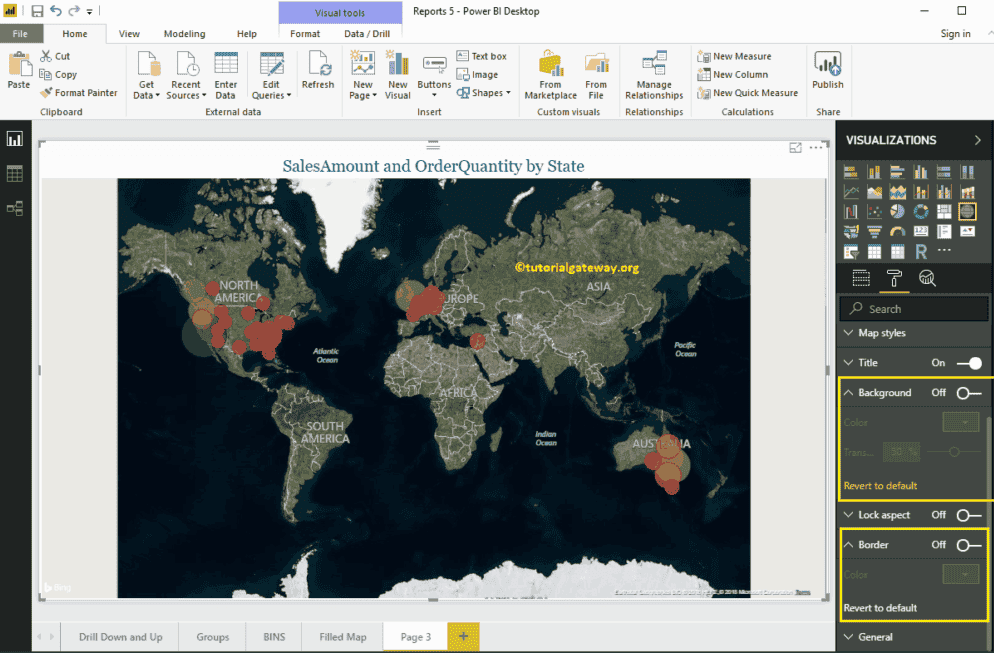Power BI Maps help you to visualize the geological data. Let us see the step-by-step approach to Creating a Map with a practical example.
For the Power BI Map demo, we used the World Population Excel data file that we downloaded from the Data bank. Please visit Connect to Excel to learn the steps included in working with Excel.
How to Create a Map in Power BI
Dropping any geographic data into the Power BI Canvas area automatically create a Map. For instance, let me drag and drop the Country Names available in the world Population table to the Canvas.
From the following screenshot, you can notice that the Power BI desktop has created a map for you.
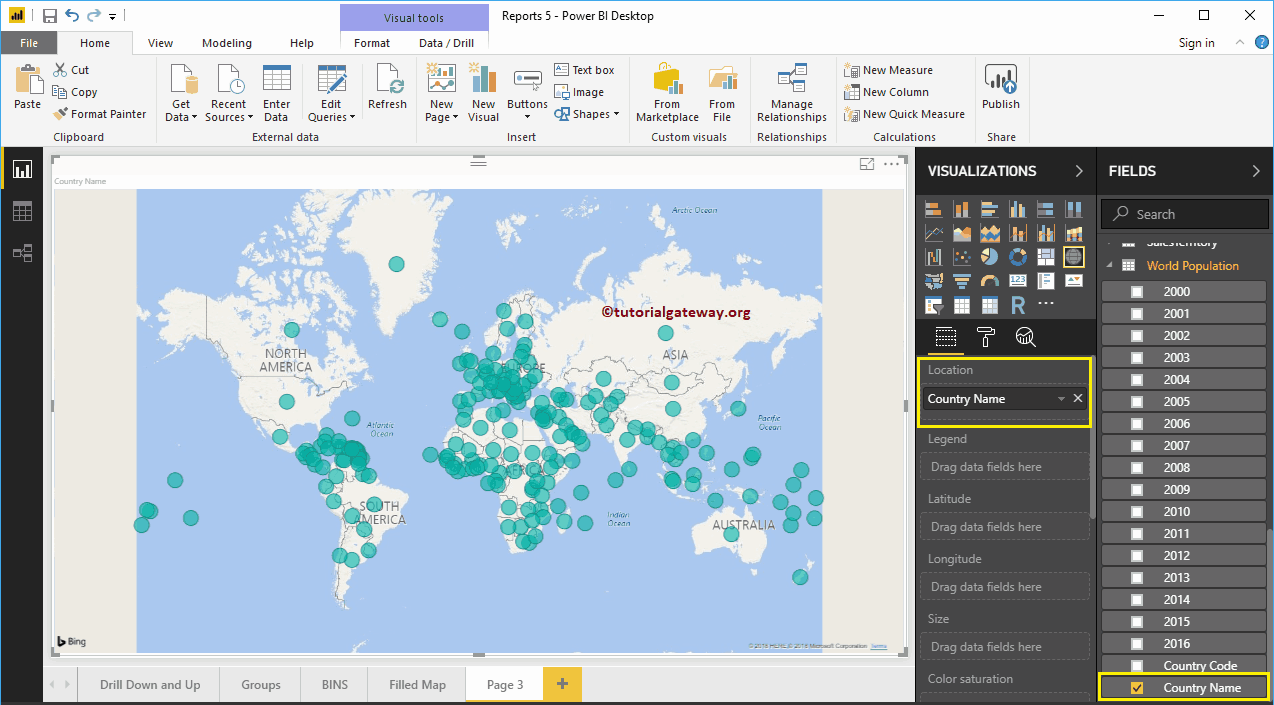
Next, Drag and Release the Population of the year 2016 from the Power BI Fields region to the Legend section.
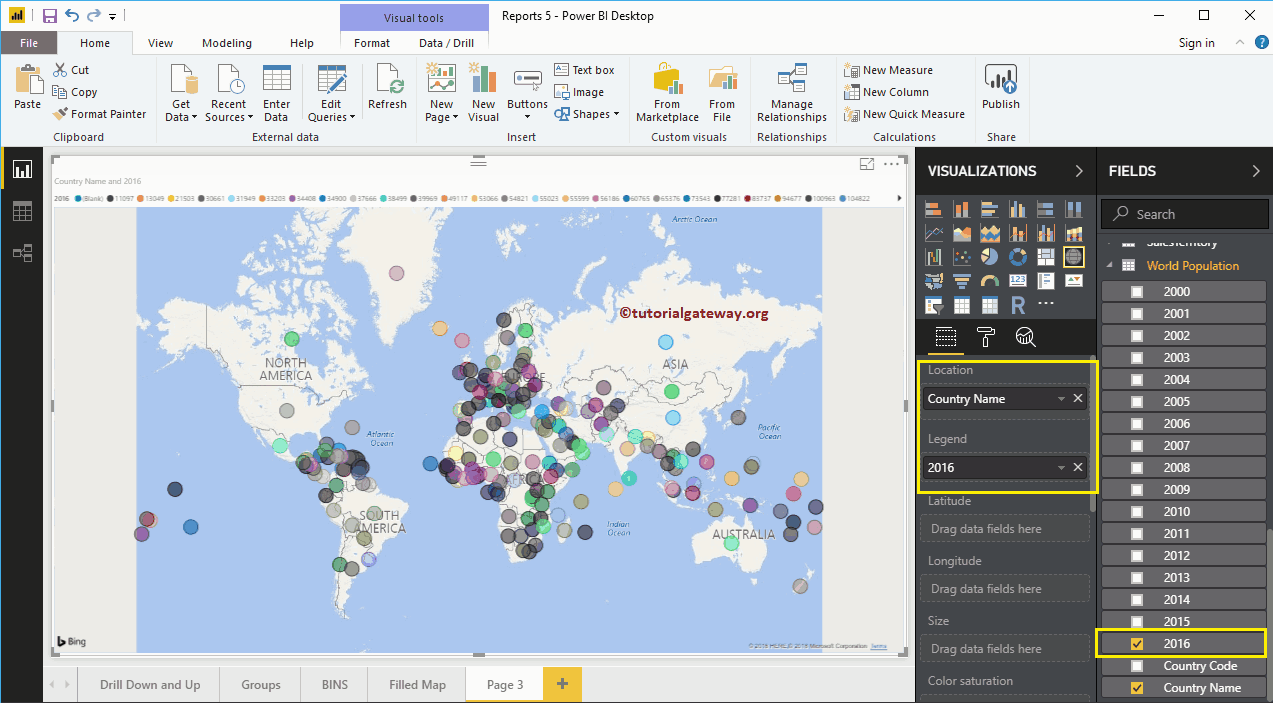
Hover over any bubble to see the country it represents and the country’s population.
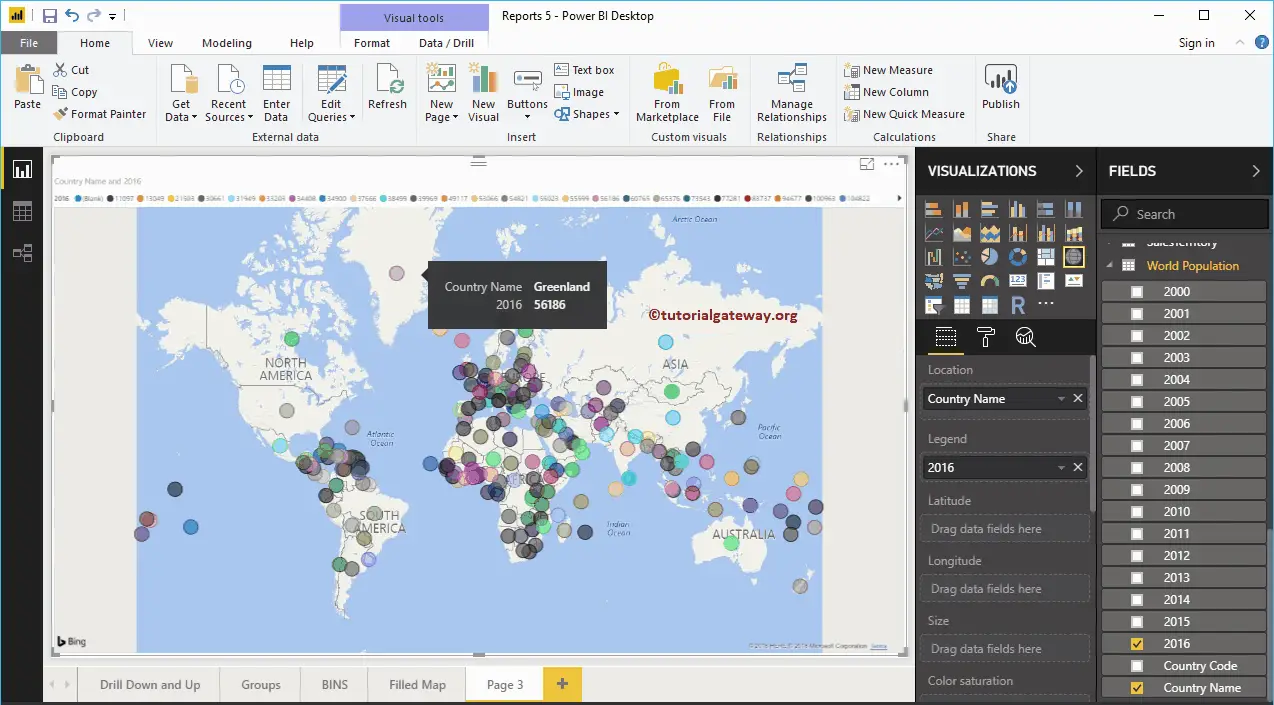
Create a Map in Power BI using Visualization
First, under the Visualization section, click on the Map. It automatically creates with model data, as shown in the screenshot below.
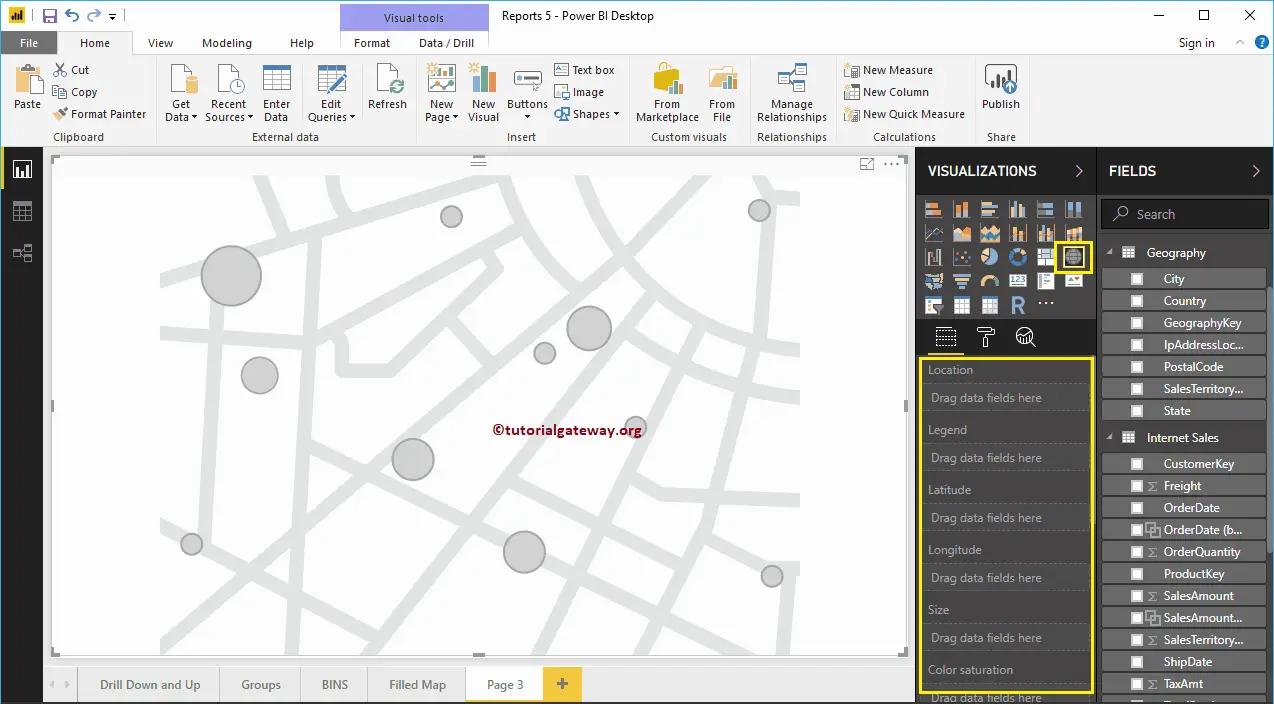
To add data to a Map in Power BI, we should add the required fields:
- Location: Please provide the Geological Column name that draws the Bubbles.
- Legend: Column name that sub-divides the data in the Location section. Something similar to a Country, Region, Territory, or Continent
- Latitude and Longitude: If the data contains the latitude and longitude information, you can use them to retrieve the exact location.
- Size: Define the Column that describes the Bubble size.
- Color Saturation: Any Numeric data that decides the Power BI map bubble’s color.
Let me drag the State from the Fields area to the Location Section. You can achieve this by dragging the State column to the Location section or checkmark the State column.
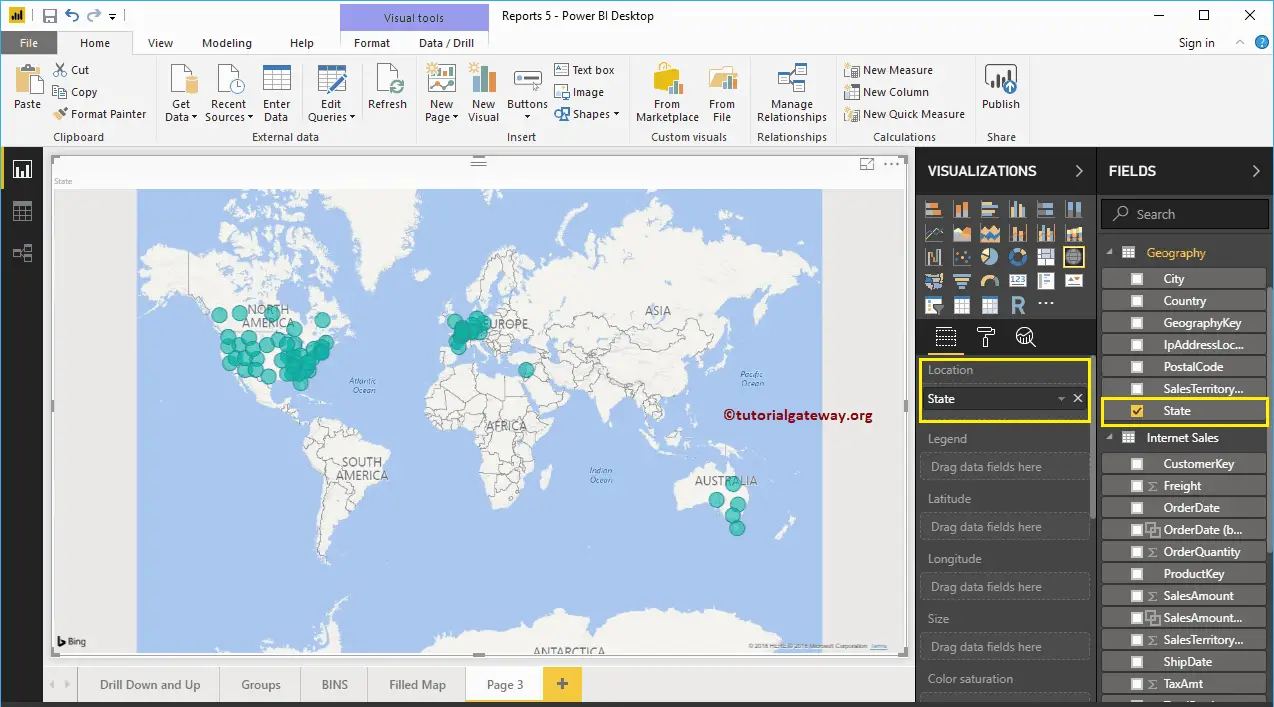
Next, add the Sales Amount to the Size section. Now, you recognize the size difference in the bubbles.
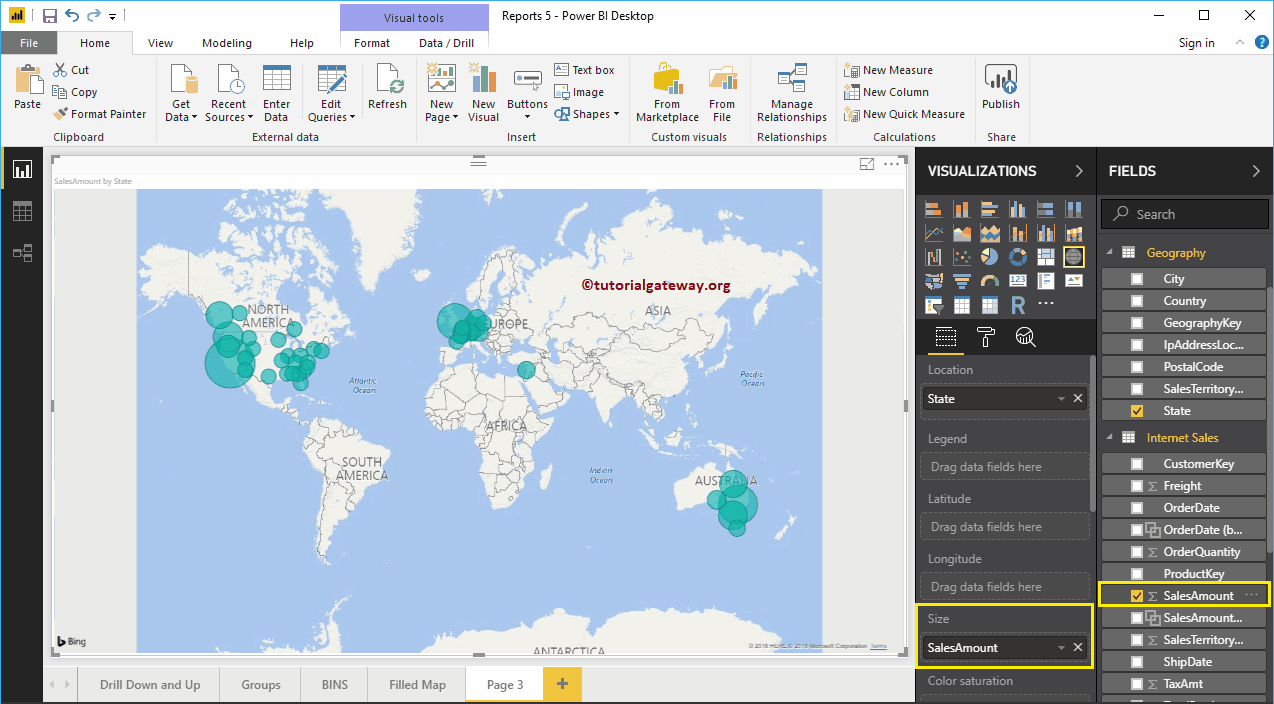
Next, let me add Country Name to the Tooltip section. After this, if you hover over any bubble, show you the Country, State, and Sales Amount information.
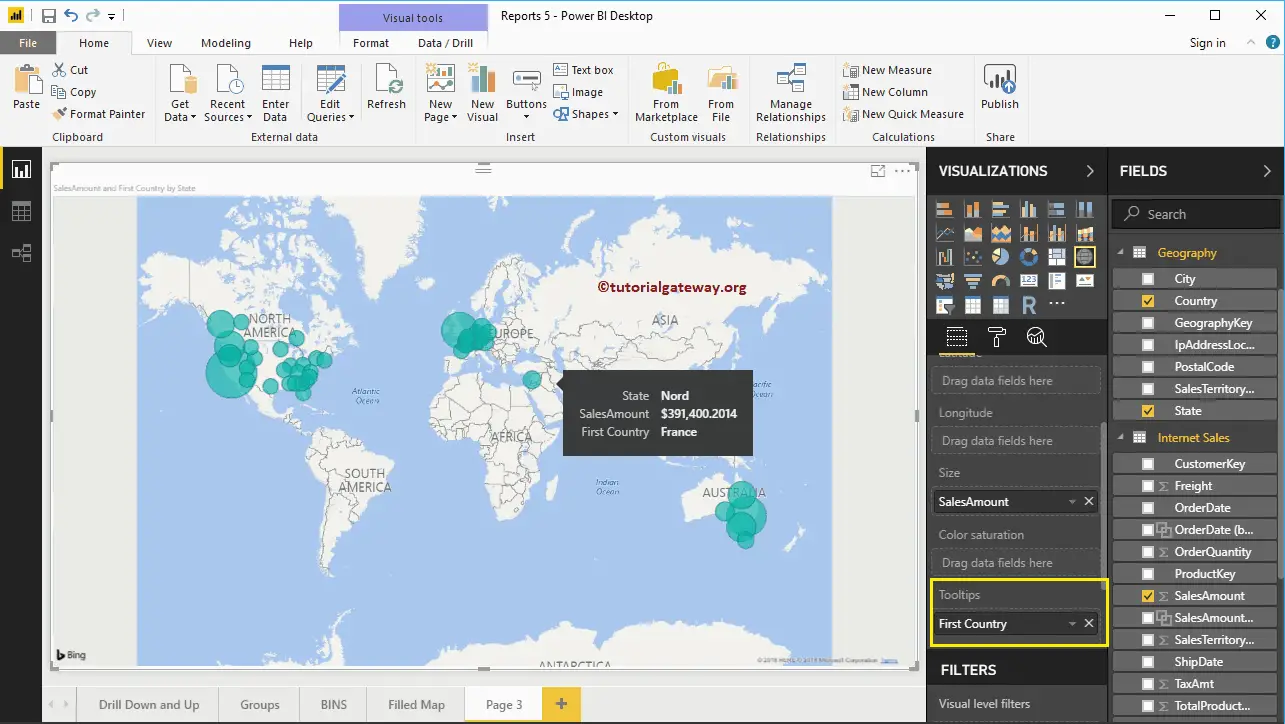
Let me add Country Name to the Legend section. As you can see, the color of bubbles is changed based on the country they represent.
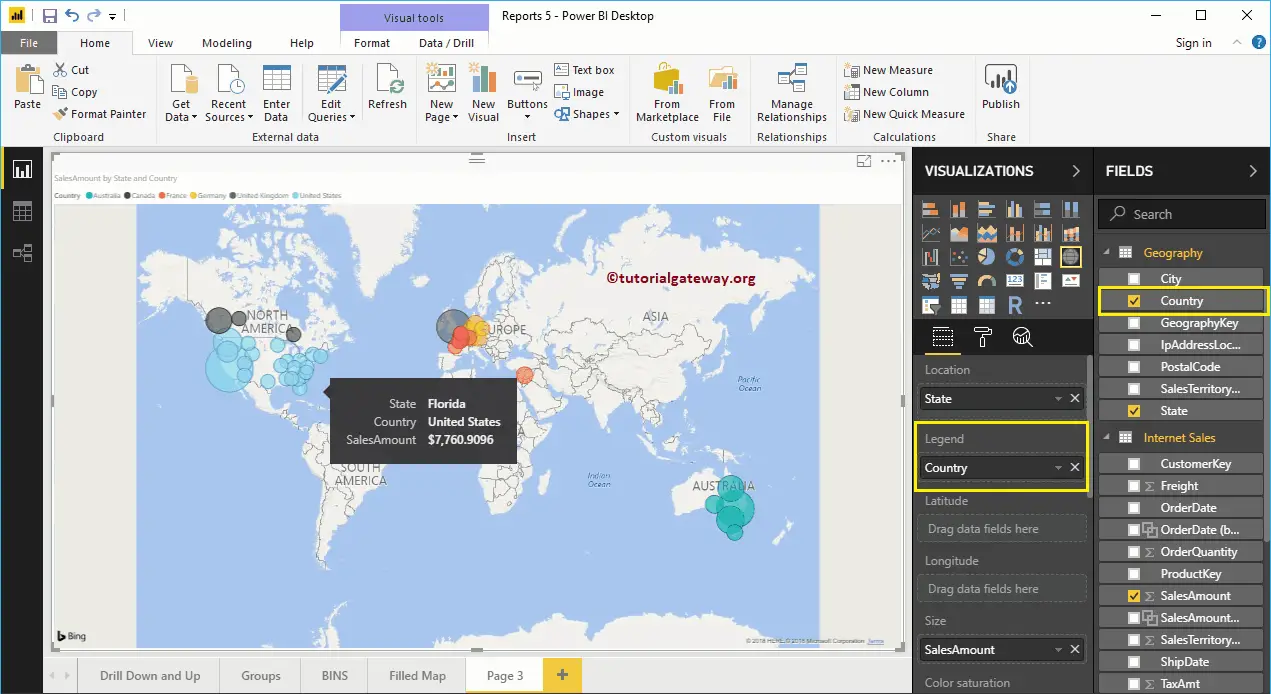
To demonstrate the Color Saturation section of a Power BI map, we added the Order Quantity to the Color Saturation section. From the below screenshot, the color of each circle has changed as per the Order Quantity. Remember, you can’t use the Legend and Color Saturation simultaneously.
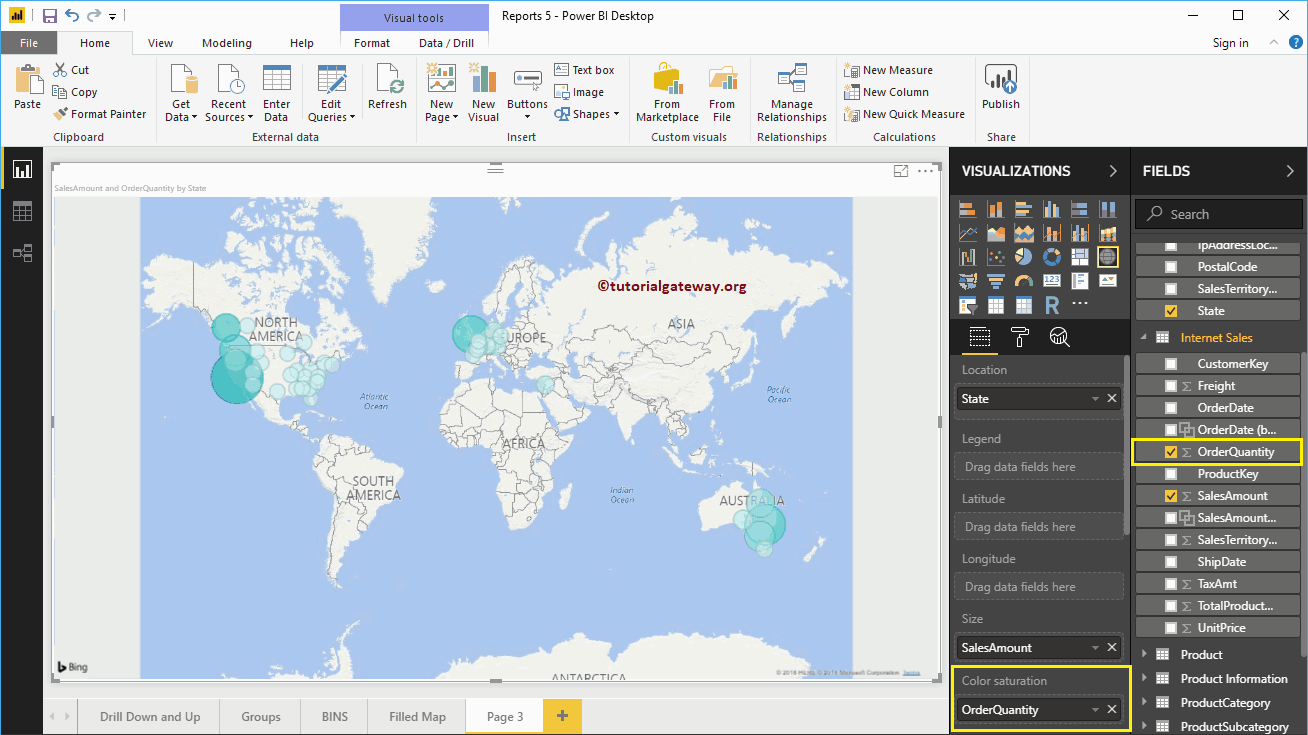
Let me do some quick formatting to this Map. I suggest you refer next section to understand the formatting options.
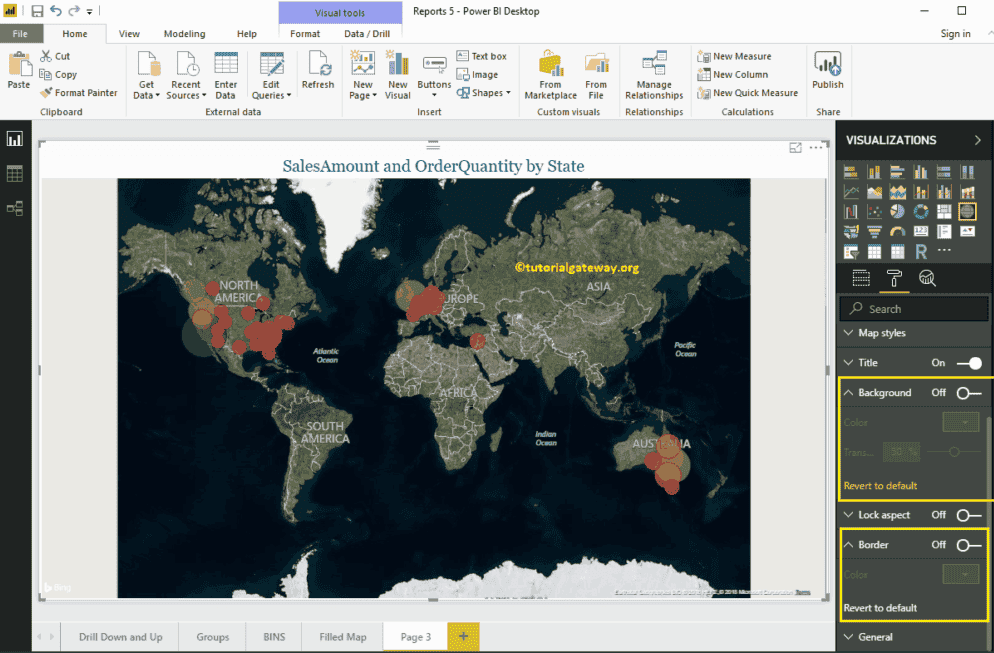
Format Power BI Map
How to Format Power BI Map with an Example? Formatting Map includes changing the Bubble Size, Color, Map Title text, Title position, background color, etc. To demonstrate these Map formatting options, we will use the Map we created earlier.
Please click the Format button to see this map’s list of formatting options.
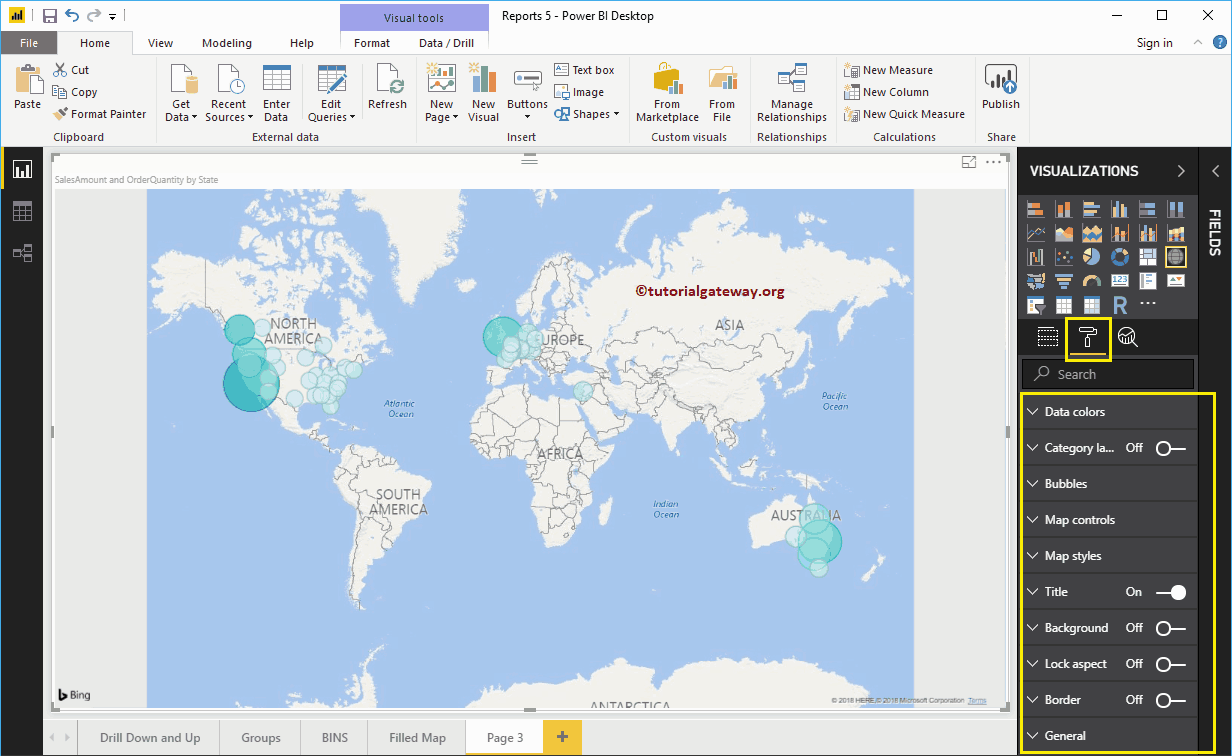
Format Power BI Map Data Colors
While creating this map, we added the Order Quantity as the Color Saturation, and that’s why we see the Diverging option under the Data Colors. Please change the Minimum, Center, and Maximum colors per your requirements.
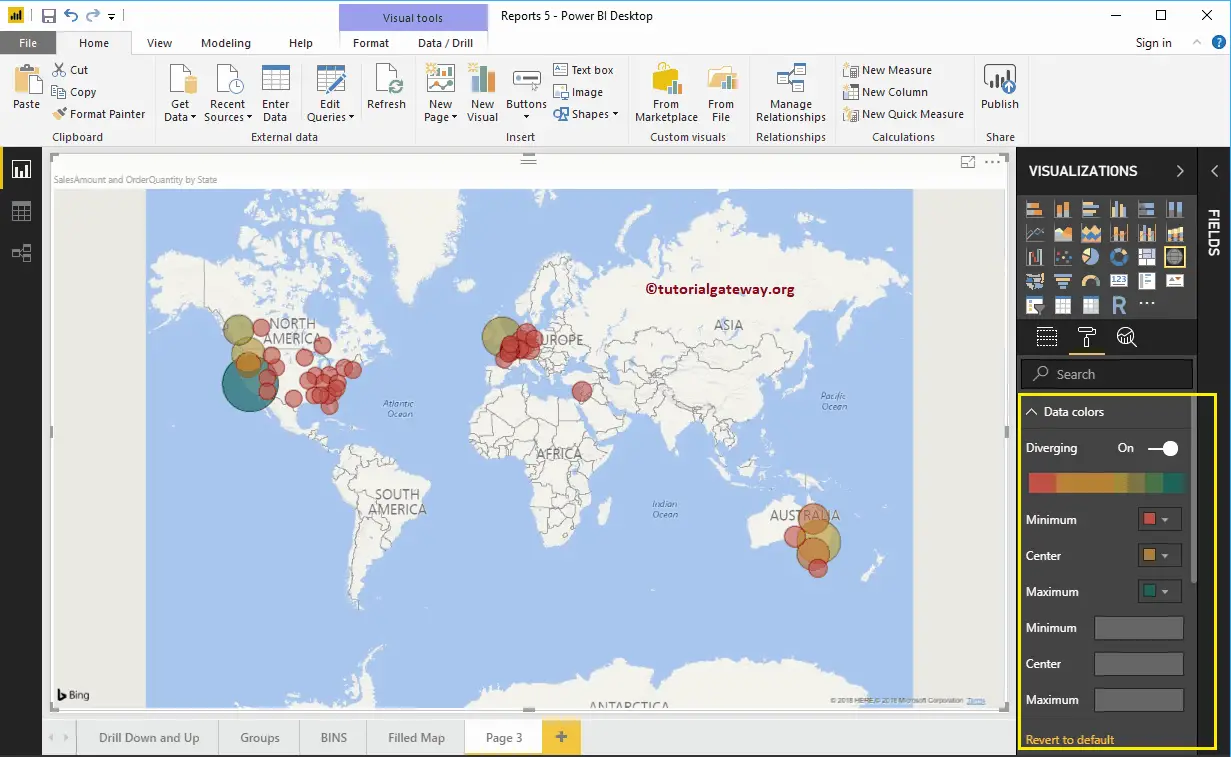
If you removed the Order Quantity from the Color Saturation, the Data Colors section shows you each bubble’s colors, as shown below.
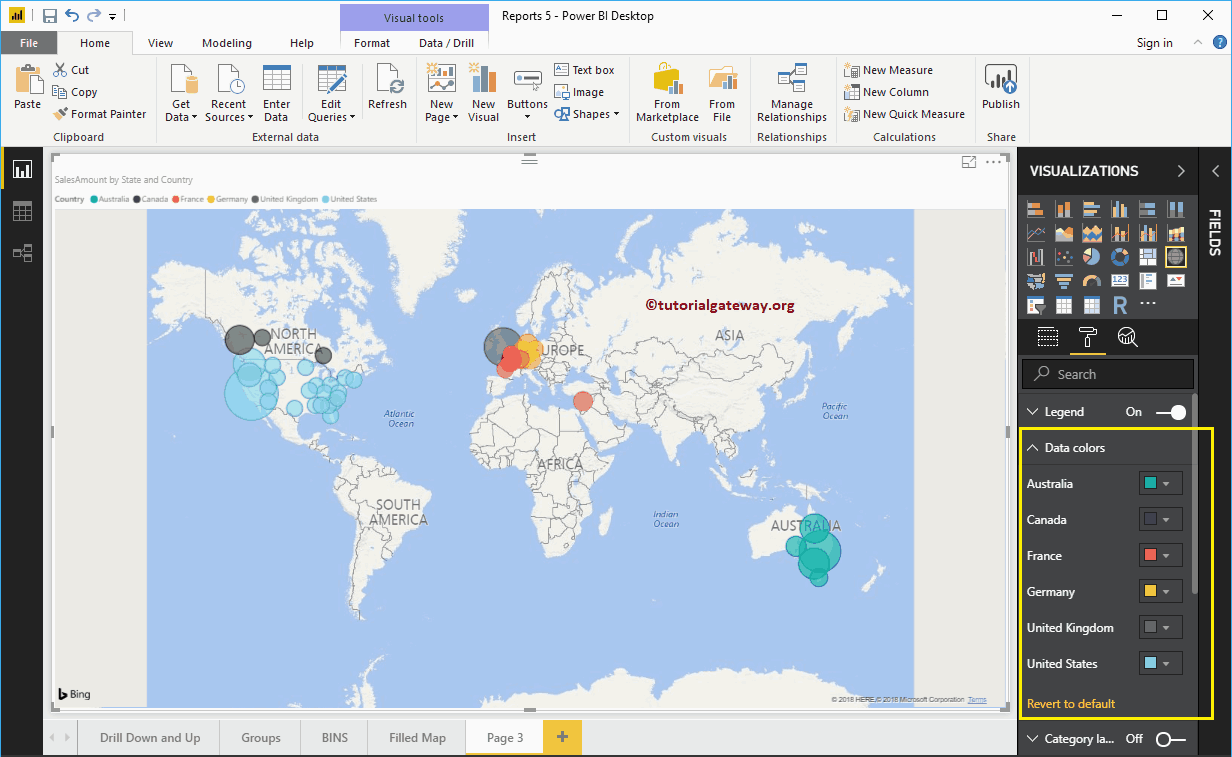
Let me add the Order Quantity to Color Saturation again
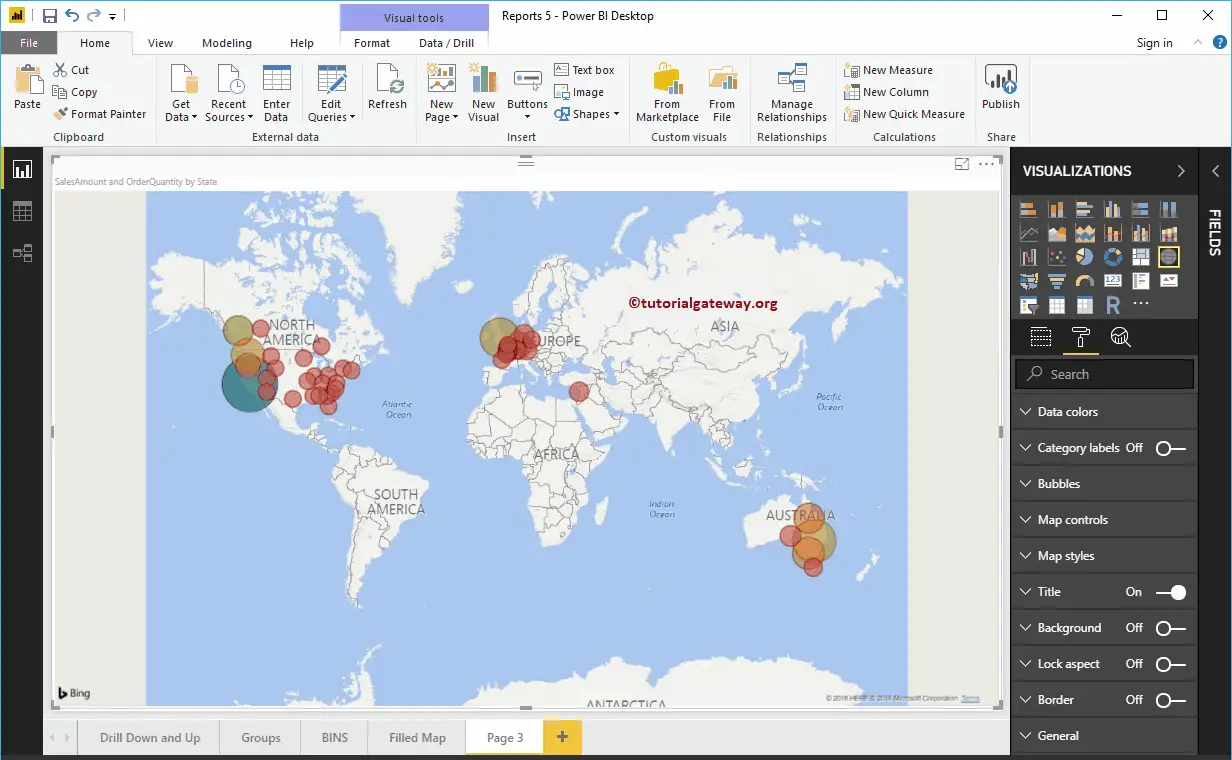
Format Power BI Map Category Labels
Map Category labels mean names that represent each bubble or circle. You can enable these labels by toggling the Category labels option from Off to On.
The screenshot below shows that we changed the Color to Black and the Text Size to 14. If you want, you can add the background color as well.
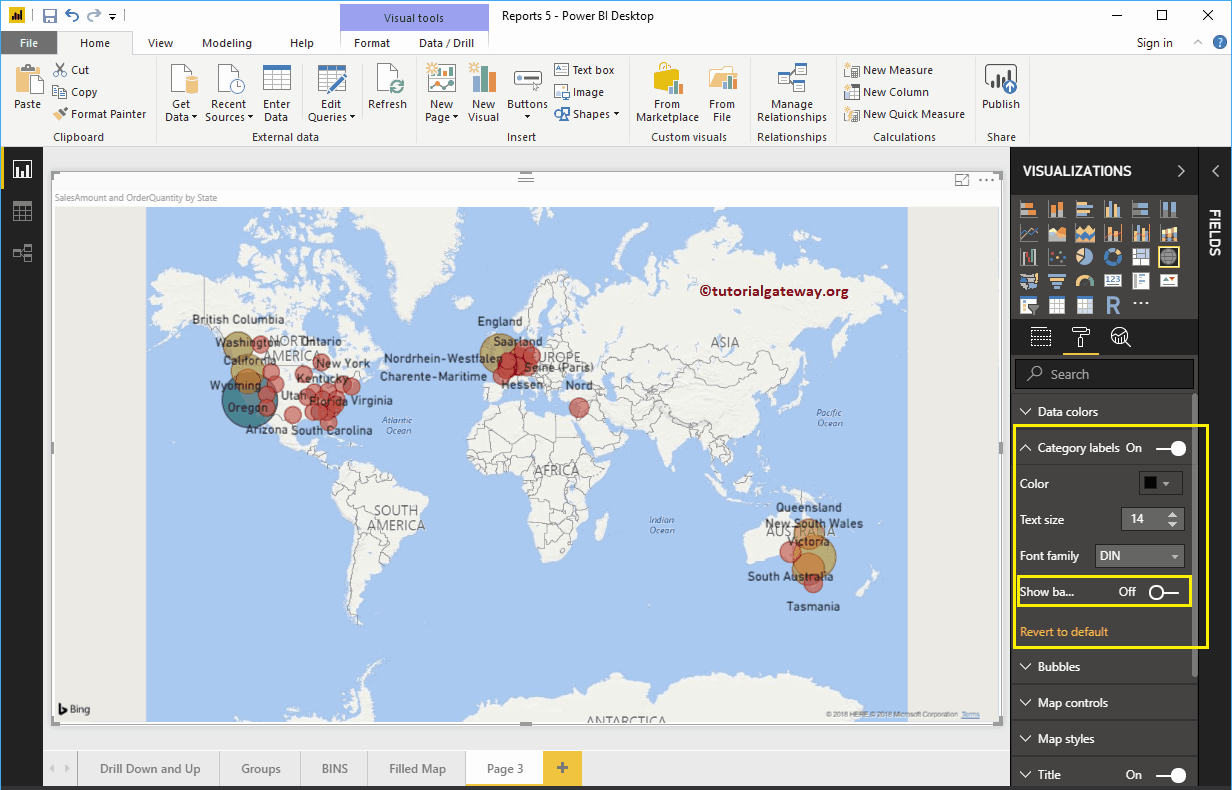
Format Bubble Size of a Power BI Map
Use this section to change the size of all the Circles. As you can see from the screenshot below, we changed the size to 25%.
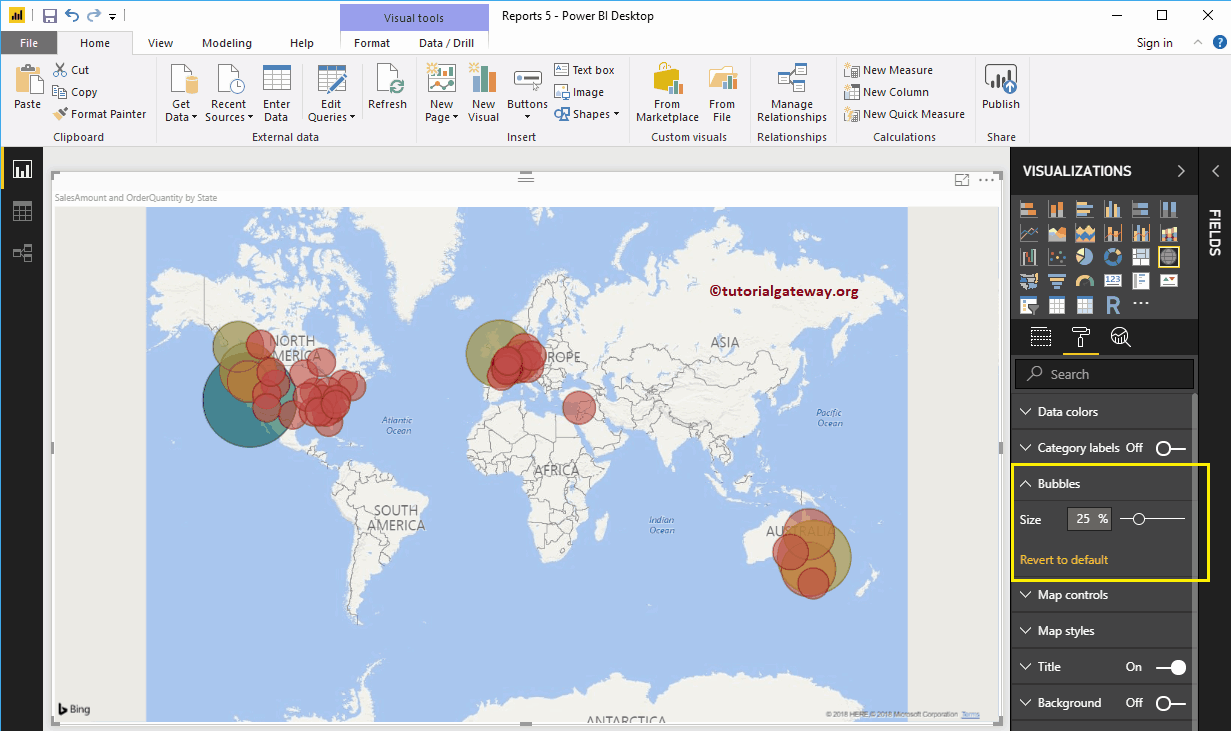
Map Control in Power BI Map
By default, the auto zoom option is enabled for this map. However, you can disable it by toggling the Auto Zoom option from on to off.
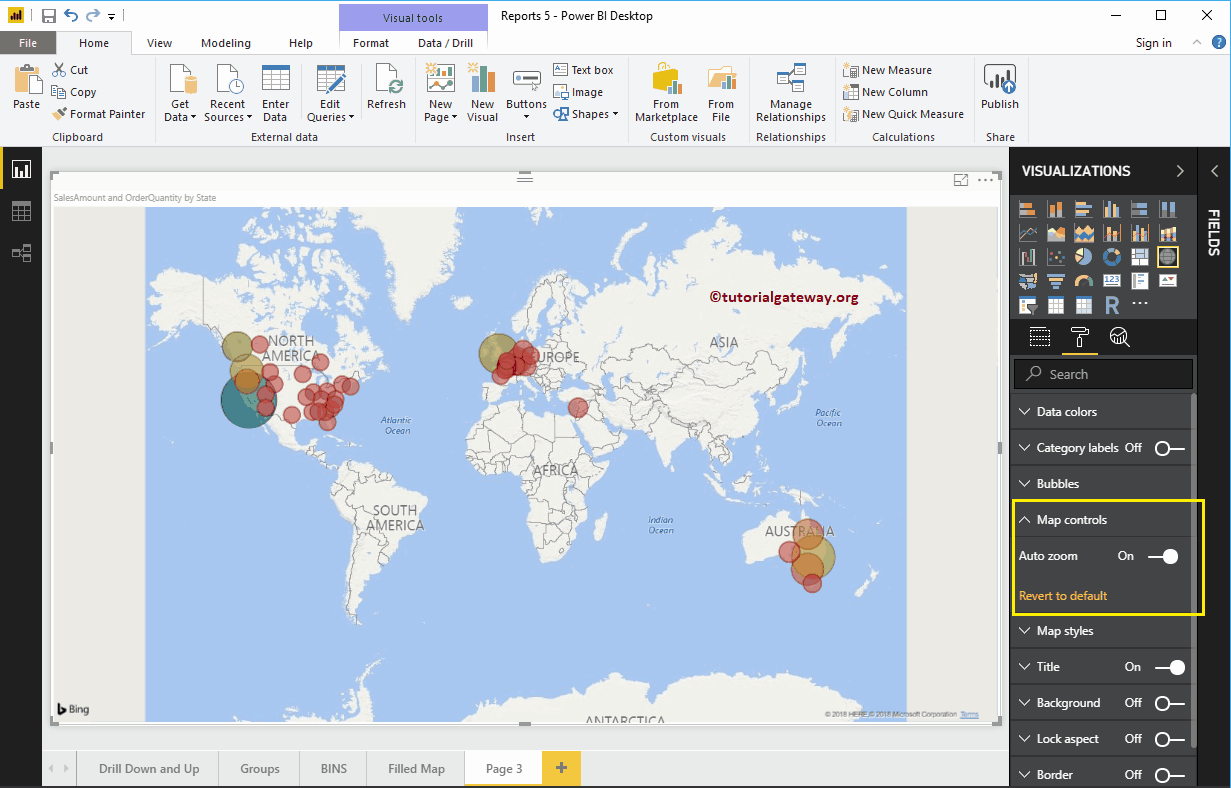
Format Theme of a Map
Use this section to change the look or theme of a map. Let me select the Aerial Theme.
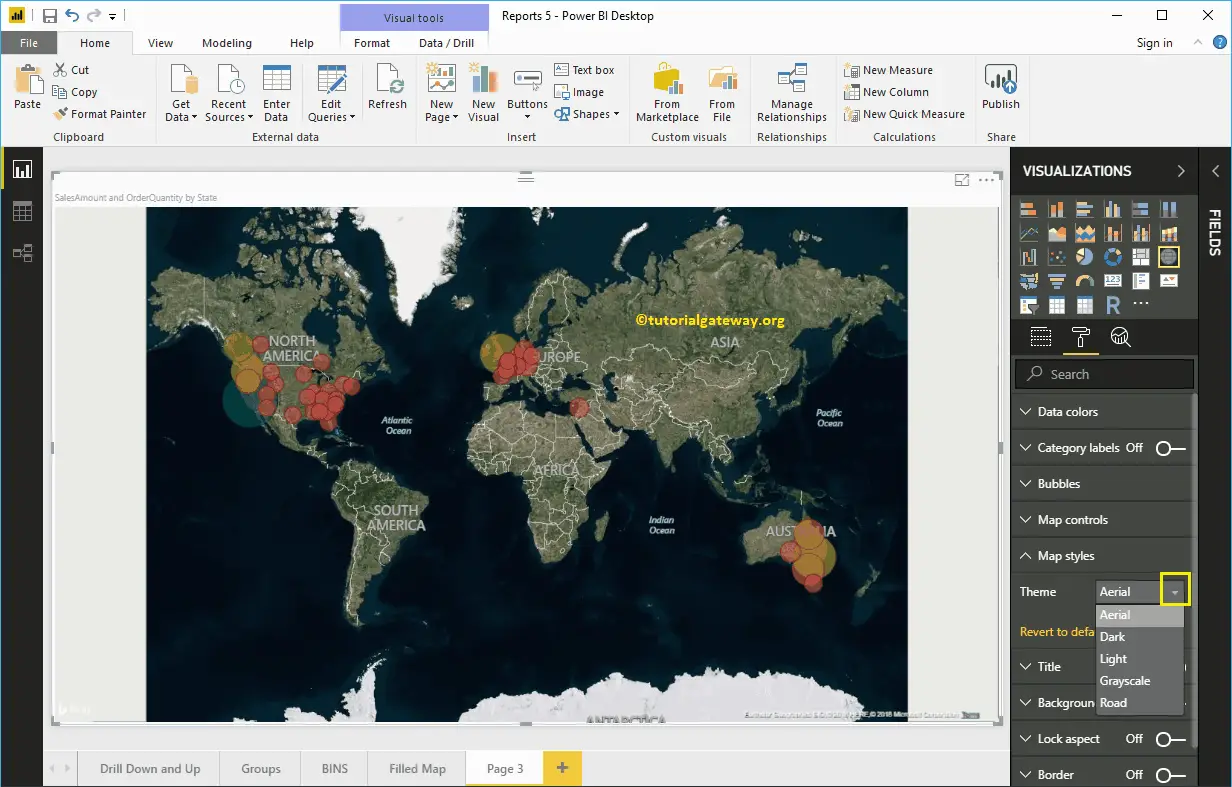
Format Title of a Map in Power BI
You can disable the Map title by toggling the Title option from On to Off.
From the screenshot below, we change the Font Color to Green, Text Size to 20, Font Family to Georgia, and the Title Alignment to center. If you want, you can also add the background color to the title.
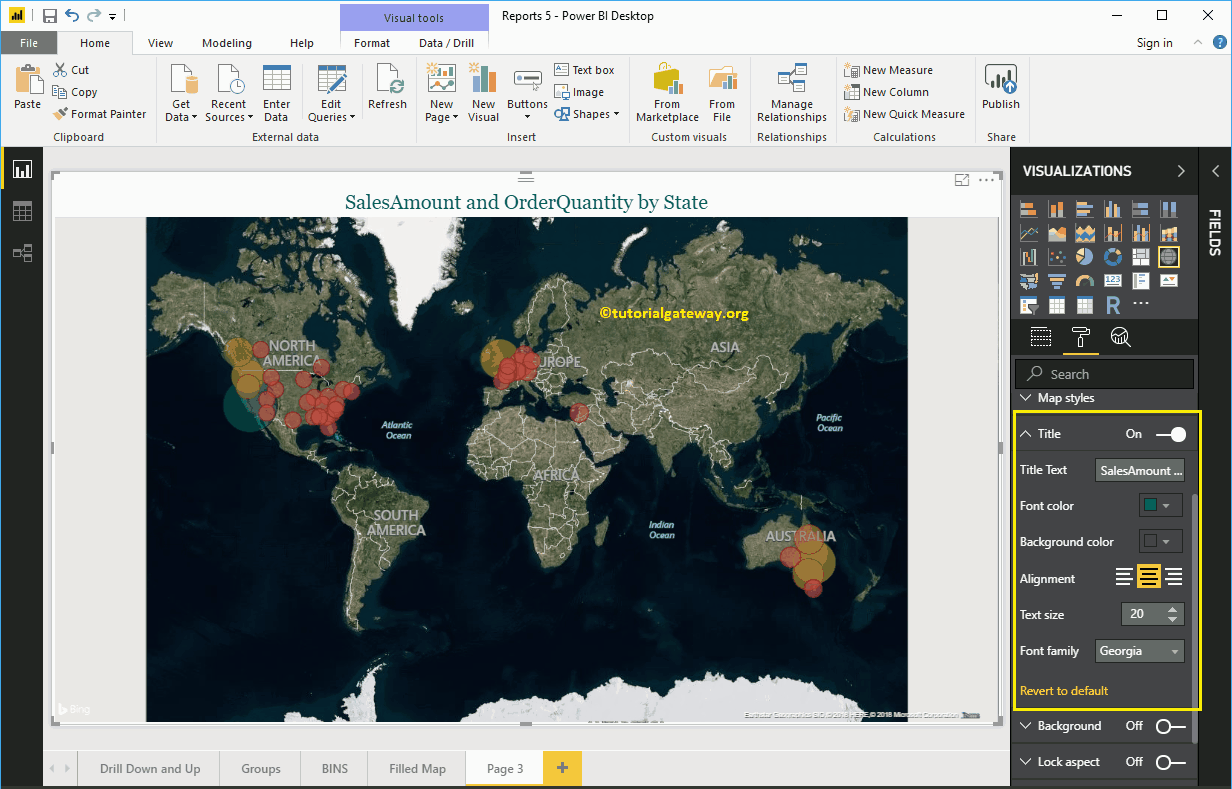
Format Background Color and Borders of a Map
You can add the Background color to a Map by toggling the Background option to On.
Similarly, you can add Borders to a Map by toggling the Border option from Off to On.
